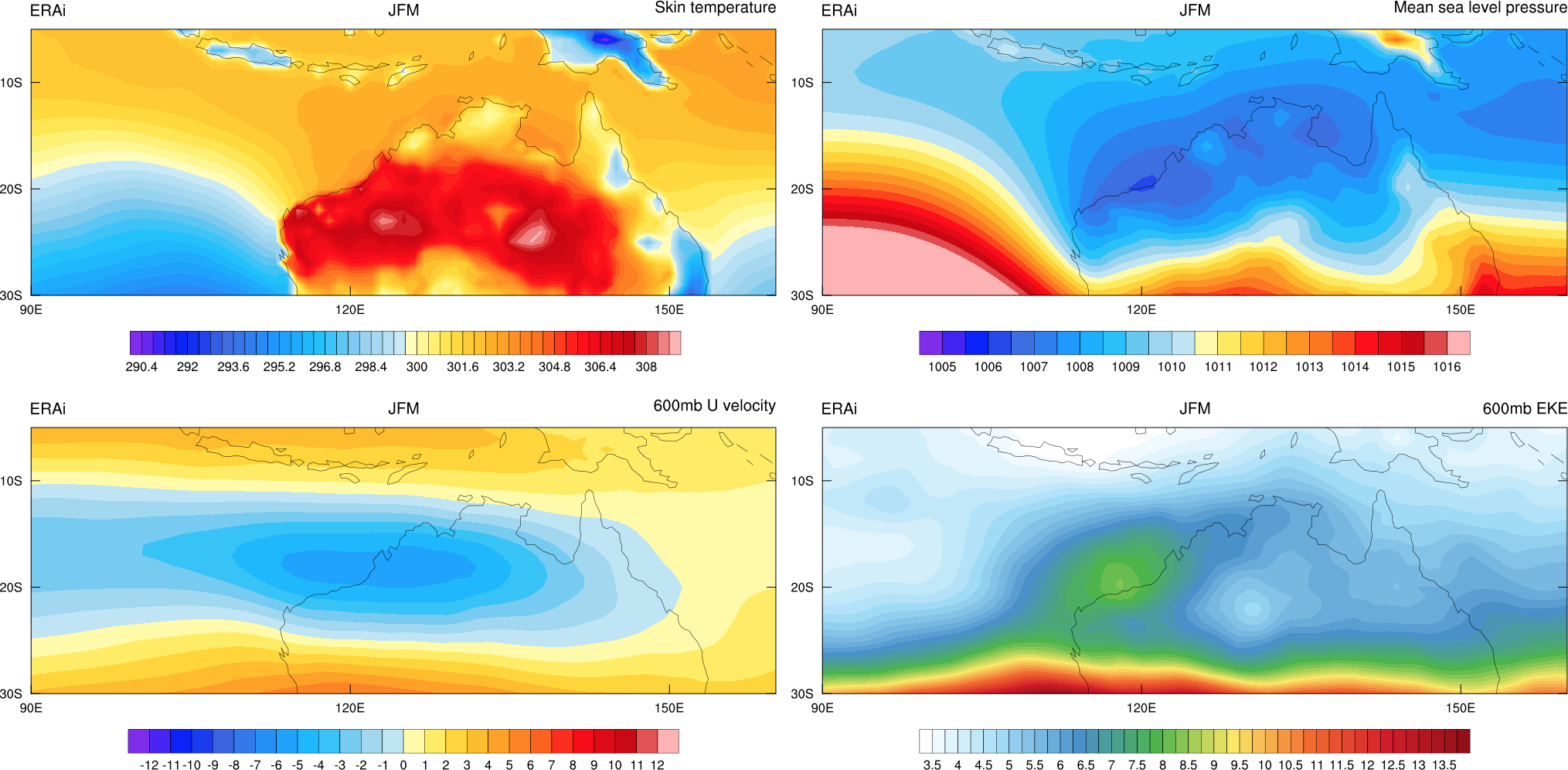Atlantic tropical cyclones often form from easterly waves generated over Africa. Although these waves are not completely understood, we know a lot about how they form. In short, they exist during Northern Hemisphere (i.e. boreal) summer because of the temperature difference between the hot, dry Saharan desert and the relatively cool and wet surface near the equator. The large deserts of western Australia should provide similar conditions during the Southern Hemisphere (i.e. austral) summer, but I never hear anyone talking about “Australian easterly waves”. I decided to look into this the other day and share what I found.
Looking at the climatological tropical cyclone tracks it seems there is a hotspot just off the coast of West Australia, although its not a very exciting region compared to the West Pacific and Atlantic.

Below I’ve plotted some relevant ERA interim data for looking at the easterly wave activity over Australia averaged over the austral summer (Jan, Feb, Mar) for 1990-2014.
The surface temperature (top left) shows two hotspots approximately located over the Great Sandy Desert in the West and the Simpson Desert in the East. The top right panel shows the sea-level pressure, which should reveal any thermal low pressure features associated with the deserts. I’m actually a bit surprised that the thermal lows are not more obvious.

This surface temperature pattern leads to a mid-tropospheric jet over Western Australia, as shown in the 600mb zonal wind in the lower left panel. It might be stronger at other levels, but I didn’t check. The lower right panel shows the 600mb perturbation kinetic energy (PKE), which is also sometimes called eddy kinetic energy, which is an indicator of easterly wave activity. PKE is defined from the perturbation zonal and meridional wind velocities as,
![]()
In this case I’ve defined the wind perturbations by band-pass filtering the wind to retain 2-10 day frequencies, which is the timescale the easterly waves operate on. The climatology of PKE shows a nice bullseye off the coast of Western Australia, but it’s pretty weak compared to Africa (see below) and also does not take an elongated shape like over Africa.
Below I’ve made comparable plots over Africa during boreal summer. You can really see how much stronger the mid-tropospheric jet and wave activity are over Africa. The hottest part of the Sahara is also hotter and larger than the deserts of Australia. The south-to-north temperature gradient also runs parallel to the equator for a long distance, which helps shape the jet.

I’m currently working to understand what will happen to African easterly waves in a world that has been warmed by elevated CO2. The results I have so far are suggesting that the changing patterns of ocean and land surface temperature can have a large influence on the African monsoon, but the changing nature of tropical convection also appears to have an impact. These results might also be relevant for the climate of Australia, particularly rainfall variability, but these impacts will likely be minuscule in the context of global tropical cyclone activity.

Very cool observation Walter! 🙂